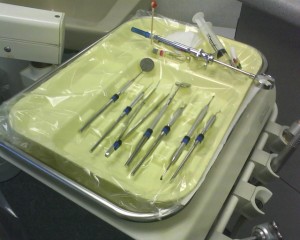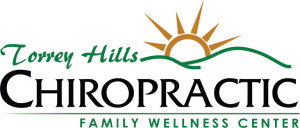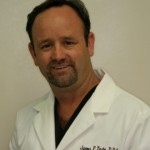Half of U.S. Adults have Periodontal Disease
Some 50% of Americans age 30 or older have periodontal disease, according to new research published August 30, 2012 in the Journal of Dental Research. This percentage is much higher than previously thought. The data indicates that 47.2%, or 64.7 million American adults, have some form of periodontal disease. In adults older than age 65, the rate increases to 70.1%.
 What does this mean to you? It means that if you are not seeing the dentist regularly, and remember that 6 month cleanings intervals are only for patients with a healthy mouth, you may not be treating the disease properly. And since periodontal disease is a “silent killer”, pain and discomfort are not good indicators that you have gum disease.
What does this mean to you? It means that if you are not seeing the dentist regularly, and remember that 6 month cleanings intervals are only for patients with a healthy mouth, you may not be treating the disease properly. And since periodontal disease is a “silent killer”, pain and discomfort are not good indicators that you have gum disease.
How can you make sure that you don’t have or can avoid periodontal disease? Comprehensive periodontal exams should be completed on every new patient at their Initial Exam and every year on regular intervals. Your dentist or hygienist will place a periodontal probe into the sulcus surrounding your teeth and measure the pocket. A healthy pocket is 2-3mm. 4-5 mm. pockets are mild/moderate periodontal disease, and a 6+mm. pocket is advanced periodontal disease. Treatment for periodontal disease should begin with “deep cleanings”, also known as Root Planning and Scaling. Following this procedure, one should have their teeth maintained with cleaning every 3 months until all signs of pockets 4 or more are eliminated. If a pocket of 4+ remains, treatment can include localized antibiotic therapy or a periodontal surgery.
What are the consequences of not treating periodontal disease? The list of secondary diseases caused by untreated periodontal disease seems to be endless, but includes heart disease, stroke, diabetes and dementia to name a few. Researchers have found that people with periodontal disease are almost twice as likely to suffer from coronary artery disease as those without periodontal disease.
What can you do to prevent or treat periodontal disease? The first and most obvious solution is too see a dentist for a comprehensive periodontal evaluation. Secondarily, excellent home care, which includes brushing, flossing and rinsing. In addition to the above, here are some other not so obvious ways to promote heathly gums:
- Eat and drink up. It is well known that eating a balanced diet leads to proper nutrition and helps keep the body running effectively. Studies published in the Journal of Periodontology (JOP) have also shown that certain foods can promote teeth and gum health. Foods containing omega-3, calcium, vitamin D and even honey have all been shown to reduce the incidence or severity of periodontal disease.
- Hit the gym. Frequent exercise is a recognized way to avoid being overweight, and it may ultimately reduce your risk of periodontal disease. In a study published in the Journal of Periodontology, researchers found that subjects who maintained a healthy weight and had high levels of physical fitness had a lower incidence of severe periodontitis than those that did not exercise.
- Stress less. Stress can lead to a variety of health complications, including periodontal disease. Research published in the JOP showed a relationship between stress and periodontal disease. Increased levels of cortisol, which the body releases when experiencing stress, can intensify the destruction of the gums and bone due to periodontal disease. In addition, another JOP study indicated that people experiencing stress are more likely to neglect their oral hygiene.
- Kick the habit. Smoking is not only a leading cause of respiratory and cardiovascular disease in the United States, it is also a major risk factor for periodontal disease. Several research studies have shown that smoking not only increases the chance of developing periodontal disease, but it can also affect the success of treatments for existing periodontal disease.
- See the doctor. Regular check-ups by a physician can help with early diagnosis of several health issues, including periodontal disease. A large body of research associates gum disease with other chronic inflammatory diseases such as diabetes, cardiovascular disease, and rheumatoid arthritis. Therefore, by screening for systemic disease early and receiving any needed treatment, you may also benefit your periodontal health.
Please feel free to contact my office @ 858-5223-1330 or visit us at www.torreyhillsdental.com
______________________________________________________________
Born and raised in San Diego, Dr. James Tasto attended University of San Diego where he lettered in both golf and wrestling. After earning a Bachelors in Science from Loyola Marymount University, Dr. Tasto graduated from University of Southern California Dental School with an emphasis on cosmetics and sports dentistry. Dr. James Tasto was selected by his peers to be included in the List of Top Dentists in San Diego for 2007 – 2011. He appeared in the May issue of San Diego Magazine. Dr. Tasto is also a member of D.O.C.S. (Doctors Offering Charitable Services), a local organization that offers medical services such as plastic surgery, vision and dental to the less fortunate patients in San Diego. Dr. Tasto currently resides in San Diego with his lovely wife Traci and their 3 children. He enjoys golf, beach volleyball and playing with his kids.











You must be logged in to post a comment Login